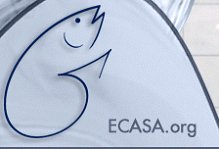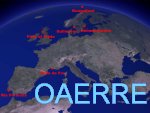
![]()
[websites]
[current projects]
[project portfolio]
[presentations]
The work done at GEM is presented at several dedicated websites.
| Carrying capacity in Chinese bays | http://www.ecowin.org/china/ |
| Eutrophication assessment in coastal systems | http://www.eutro.org/ |
| Monitoring plan for water quality and ecology in Portuguese coastal waters | http://www.monae.org/ |
| WFD typology and reference conditions in transitional and coastal waters | http://www.ecowin.org/ticor/ |
GEM is involved in a number of ongoing research projects. The main areas of interest are ecological modelling and related aspects, such as data gathering and analysis, and modelling applications for management. Current research is focused on developing and applying an ecological modelling tool (EcoWin2000) to Regions of Restricted Exchange, and using new data gathering techniques (mainly Remote Sensing and Geographic Information Systems) to obtain spatially distributed, high resolution data for modelling. Data about ongoing research is available on-line.

|
ECASA Ecosystem Approach for Sustainable Aquaculture This project (2004-2007) is financed by the European Union FP6 programme. The project takes an ecosystem approach to aquaculture, by 1) identifying plausible quantitative indicators of the effects of aquaculture on ecosystems through a process of expert working groups, workshops and meetings, 2) identifying indicators of the main drivers of ecosystem change affecting aquaculture, including natural and environmental pressures, 3) assessing both sets of indicators using existing datasets, considering each in the context of appropriate selection criteria, 4) developing a range of tools, particularly models, that encapsulate best process understanding at a wide range of scales, 5) testing these models and indicators in a wide variety of field locations across Europe (~10) encompassing major culture species and technologies, and covering a wide spectrum of environment types, and 6) using these data to test and select the final “toolpack” of models and indicators.
|
| KEYZONES Carrying capacity of key European coastal zones This project (2005-2007) is financed by the European Union CRAFT programme. KEYZONES aims to characterise the carrying capacity of key European coastal zones for commercial production of bivalve shellfish, producing powerful tools which would enable shellfish producers in the targeted areas to optimise production capacity, recruitment of young stock, and quality whilst reducing waste; and increase the scope and credibility of generic ecosystem models with a consequent application to the wider industry and other stakeholders in coastal zones.
|
|

|
SPEAR Sustainable options for PEople, catchment and Aquatic Resources This project (2004-2007) is financed by the European Union INCO-DEV programme. SPEAR aims to develop and test an integrated framework for interpreting coastal zone structure and dynamics, in areas where communities primarily depend on marine resources. This framework accounts for watershed interactions, ecological structure and human activities. The interdisciplinary approach used combines natural and social sciences, and addresses the complex scaling issues inherent in integrated management.
|
| SMILE Sustainable Mariculture in Northern Irish Lough Ecosystems This project (2004-2006) is financed by the Department of Agriculture and Rural Development of Northern Ireland. The objective is to establish the environmentally sustainable carrying capacity for shellfish aquaculture for five Northern Irish loughs: Carlingford, Strangford, Belfast, Larne and Foyle. This is being carried out using a range of modelling approaches, combined with experimental and field data acquisition.
|
|
| C2C CatchmentToCoast This project (2002-2005) is financed by the European Union INCO-DEV programme. The objectives are to design, implement and validate a generic catchment-to-coast integrated planning and management support system for the southern African region, which can also be implemented beyond the region. These capabilities will promote sustainable resource management on a whole catchment basis, specifically including the coastal zone.
|
|
|
|
|
|
|
GEM has participated in several projects involving estuarine analysis and ecological modelling, who provided useful scientific information about the systems under study, and insights about the analytical and simulation methodologies used. Some of the project results are available on-line for consultation.
 |
OAERRE Oceanographical Applications to Eutrophication in Regions of Restricted Exchange Project OAERRE aims to understand the relationships between the physical, chemical and ecological processes occurring in RREs, with the goal of producing a simple but accurate RRE model applicable for management purposes. GEM is responsible for studying the Ria Formosa site, as well as deriving general equations for the model.
|
 |
INCO-DC Carrying Capacity Assessment of Chinese Bays This project studied two Chinese bays, Sanggou and Jiaozhou, which are used for intensive aquaculture, and determined their carrying capacity in order to provide management solutions. GEM was responsible for data management and ecological modelling in the Sanggou Bay site.
|
| EUROSSAM European Salt Marsh Modelling Project EUROSSAM studied several salt marshes throughout Europe, in order to gather information on salt marsh processes. The final results were incorporated in a CD-ROM Decision Support System, intended to serve as a management tool. GEM was responsible for creating an organic matter cycling model in salt marshes. Organic Matter Cycling Models in Salt Marshes - final report
|
Much of the work done by GEM has been presented at workshops or conferences. The slides making up several of these presentations are available online:

